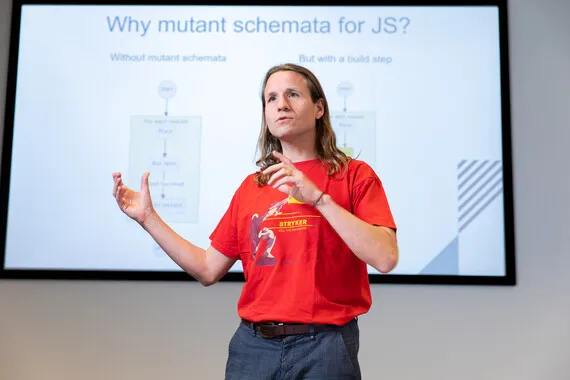course
Architecting on AWS
Learn how to optimize the AWS Cloud

Description
This course focuses on the fundamentals of building IT infrastructure on the AWS platform. You will learn how to optimize the AWS Cloud by understanding AWS services and how they fit into cloud-based solutions. Best practices and design patterns are covered to help you architect optimal IT solutions on the AWS Cloud. Build and explore a variety of infrastructures through guided discussions and hands-on activity.
Who should attend This course is intended for:
- Solutions Architects
- Solution Design Engineers
- Anyone who needs to understand the scope of cloud architectures
Course Objectives This course is designed to teach you how to:
- Make architectural decisions based on AWS architectural principles and best practices
- Leverage AWS services to make your infrastructure scalable, reliable, and highly available
- Leverage AWS Managed Services to enable greater flexibility and resiliency in an infrastructure
- Make an infrastructure based on AWS more efficient to increase performance and reduce costs
- Use the Well-Architected Framework to improve architectures with AWS solutions
Certifications This course is part of the following Certifications:
- AWS Certified Security – Specialty
- AWS Certified Solutions Architect – Associate
This course is provided by and at the location of a partner of Info Support; any discount arrangement with Info Support does not apply here.
When you register with an Info Support Master Key Card, extra days will be charged. Contact Info Support for more information.
Prior Knowledge
- Course AWS Cloud Practitioner Essentials (CPESS)
- Working knowledge of distributed systems and multi-tier architectures
- Familiarity with general networking and cloud computing concepts
Subjects
Day One
Module 1: Introduction The Well-Architected Framework AWS Global Infrastructure
Module 2: The simplest architectures Amazon Simple Storage Service (Amazon S3) Amazon S3 Glacier Choosing AWS Regions for your architectures Hands-on lab: Hosting a Static Website
Module 3: Adding a compute layer Amazon Elastic Compute Cloud (Amazon EC2) Amazon Machine Images (AMIs) Amazon Elastic Block Storage (Amazon EBS) Amazon Elastic File System (Amazon EFS) Amazon FSx
Module 4: Adding a database layer Database layer considerations Amazon Relational Database Service (Amazon RDS) Amazon DynamoDB AWS Database Migration Service (AWS DMS) Hands-on lab: Deploying a Web Application on AWS
Module 5: Networking in AWS – Part 1 Amazon Virtual Private Cloud (Amazon VPC) Network security in the cloud Hands-on lab: Creating a VPC
Day Two
Module 6: Networking in AWS – Part 2 AWS VPN connections AWS Direct Connect (DX) VPC peering AWS Transit Gateway Load balancing on AWS Amazon Route 53
Module 7: AWS Identity and Access Management (IAM) Account users and AWS IAM Federating users Amazon Cognito AWS Organizations
Module 8: Elasticity, high availability, and monitoring Amazon CloudWatch AWS CloudTrail Amazon EC2 Auto Scaling Scaling your databases Hands-on lab: Creating a highly available environment
Module 9: Automation AWS CloudFormation AWS Systems Manager AWS OpsWorks AWS Elastic Beanstalk Hands-on lab: Automating infrastructure deployment with AWS CloudFormation
Day Three
Module 10: Caching Caching on AWS with Amazon CloudFront Session management Amazon DynamoDB Accelerator (DAX) Amazon ElastiCache
Module 11: Building decoupled architectures Amazon Simple Queue Service (Amazon SQS) Amazon Simple Notification Service (Amazon SNS)
Module 12: Microservices and serverless architectures Amazon Elastic Container Service (Amazon ECS) AWS Fargate AWS Lambda Amazon API Gateway AWS Step Functions Hands-on lab: Implementing a serverless architecture with AWS Managed Services
Module 13: RTO/RPO and backup recovery setup Disaster planning Data replication Recovery strategies AWS Storage Gateway
Module 14: Optimization and review Best practices for optimization Review questions
Schedule
All courses can also be conducted within your organization as customized or incompany training.
Our training advisors are happy to help you provide personal advice or find Incompany training within your organization.
Prior knowledge courses
"Trainer who knows his profession!"Marc
-
Hoge waardering
-
Praktijkgerichte trainingen
-
Gecertificeerde trainers
-
Eigen docenten




